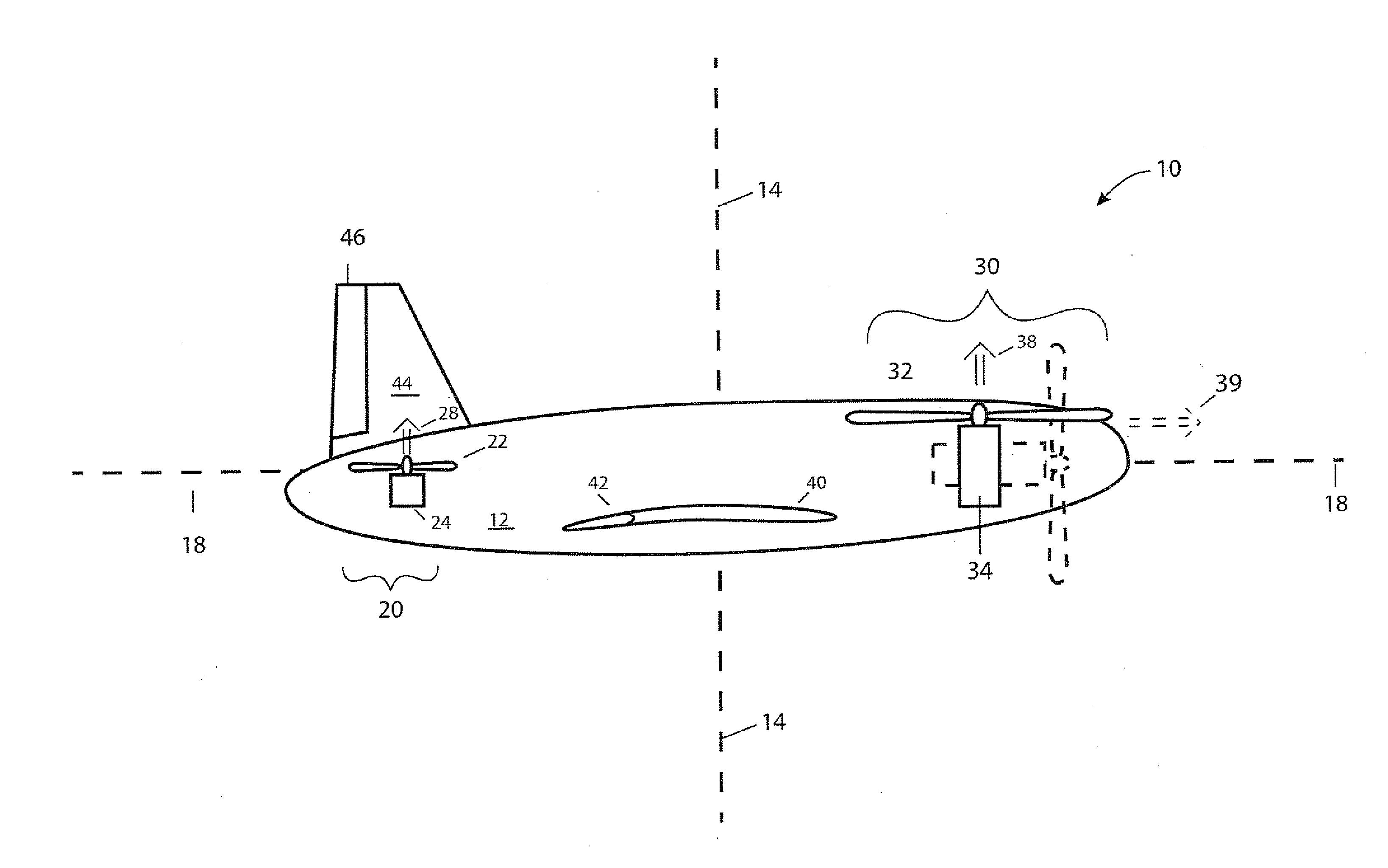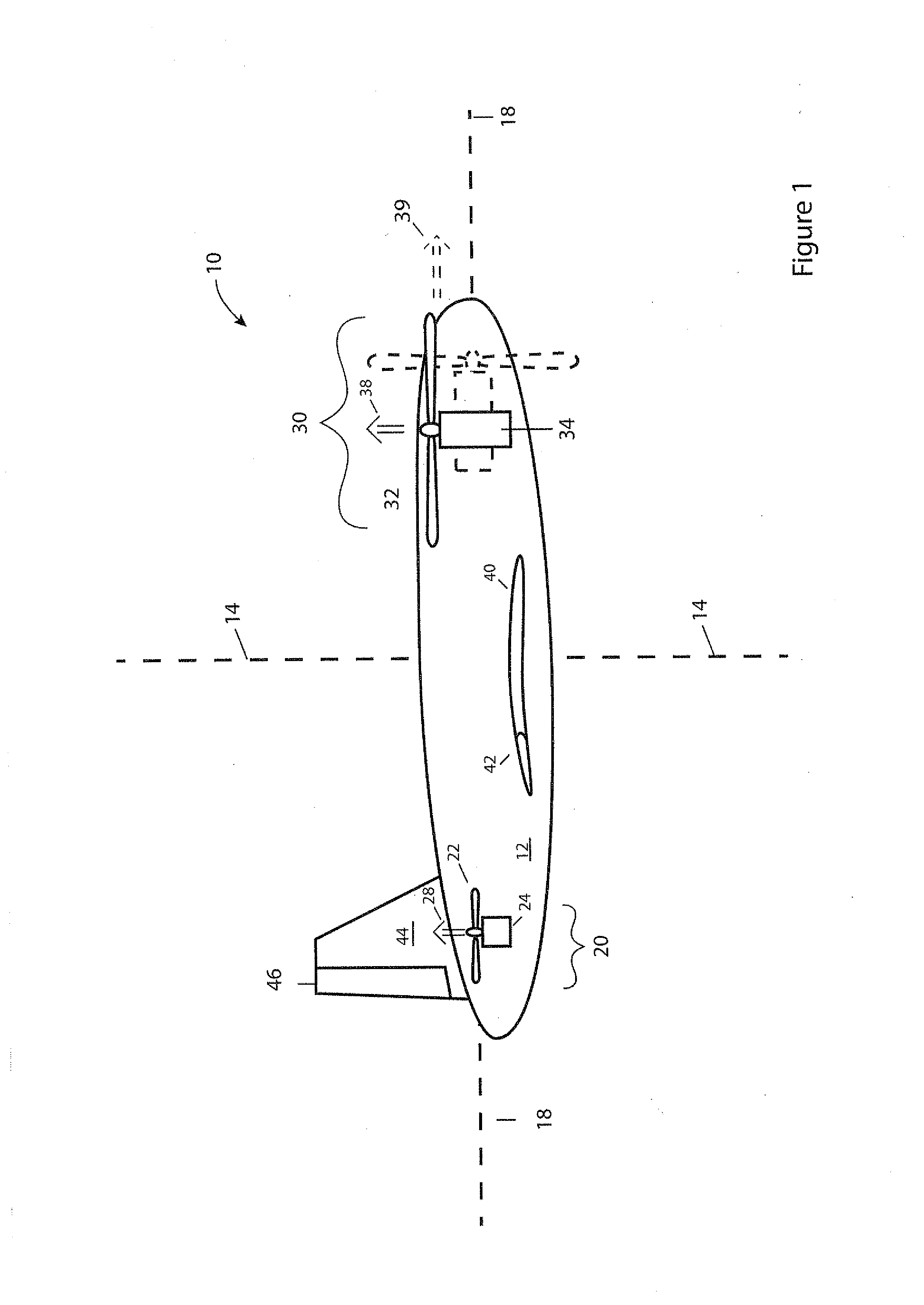Aircraft with fixed and tilting thrusters
a thruster and fixed technology, applied in the field of aircraft, can solve the problems of severe flying hazards, inability to provide full controllability to the flying body, and the platform of the helicopter is natively unstabl
- Summary
- Abstract
- Description
- Claims
- Application Information
AI Technical Summary
Benefits of technology
Problems solved by technology
Method used
Image
Examples
Embodiment Construction
[0031]The principles and operation of a FHV according to the present invention may be better understood with reference to the drawings and the accompanying description.
[0032]Referring now to the drawings, FIGS. 1-3 are, respectively, side, front and bottom views of an aircraft 10 of the present invention.
[0033]The core of aircraft 10 is a rigid fuselage 12. The turning maneuvers of aircraft 10 are defined in terms of three mutually perpendicular body-centered axes of fuselage 12: a yaw axis 14, a pitch axis 16 and a roll axis 18.
[0034]Extending laterally from both sides of fuselage 12, towards the front of fuselage 12, are two shafts 36 that support respective locomotion and hover thrusters 30. Each locomotion and hover thruster 30 includes a propeller 32 and a motor 34 for spinning propeller 32. Shafts 36 are coupled to motors (not shown) within fuselage 12 that turn shafts 36 to tilt locomotion and hover thrusters 30 parallel to the plane defined by axes 14 and 18, similar to how ...
PUM
 Login to View More
Login to View More Abstract
Description
Claims
Application Information
 Login to View More
Login to View More - R&D
- Intellectual Property
- Life Sciences
- Materials
- Tech Scout
- Unparalleled Data Quality
- Higher Quality Content
- 60% Fewer Hallucinations
Browse by: Latest US Patents, China's latest patents, Technical Efficacy Thesaurus, Application Domain, Technology Topic, Popular Technical Reports.
© 2025 PatSnap. All rights reserved.Legal|Privacy policy|Modern Slavery Act Transparency Statement|Sitemap|About US| Contact US: help@patsnap.com



